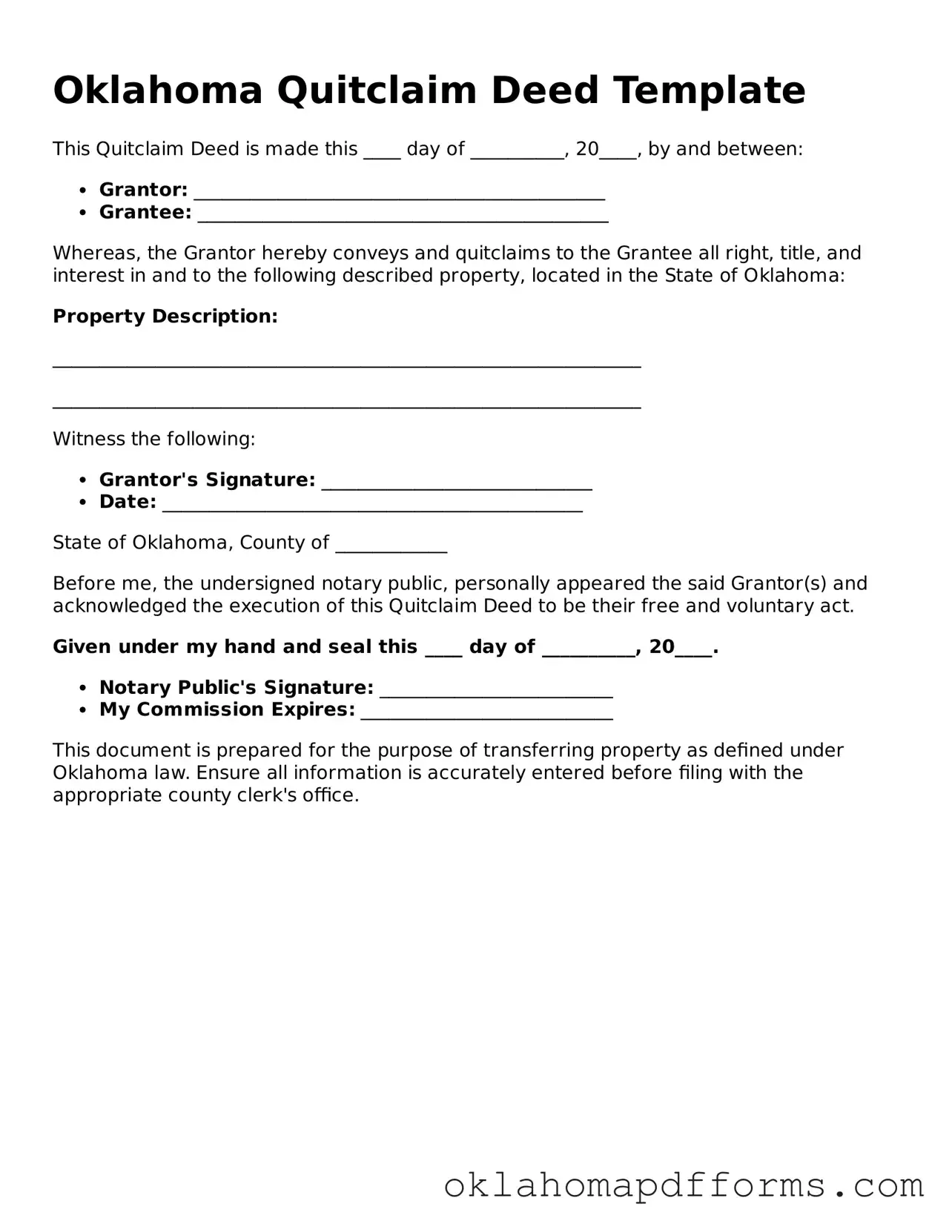A Warranty Deed is similar to a Quitclaim Deed in that both are used to transfer property ownership. However, the key difference lies in the level of protection they offer. A Warranty Deed guarantees that the seller holds clear title to the property and will defend against any claims. In contrast, a Quitclaim Deed does not provide such assurances, making it a riskier option for the buyer.
A Bargain and Sale Deed is another document that shares similarities with a Quitclaim Deed. Like a Quitclaim, it transfers ownership without warranties. However, a Bargain and Sale Deed implies that the seller has some interest in the property, even if it doesn't guarantee a clear title. This makes it slightly more secure than a Quitclaim Deed, but still less protective than a Warranty Deed.
A Special Warranty Deed is also comparable to a Quitclaim Deed. This document conveys property with limited warranties, meaning the seller only guarantees that no issues arose during their ownership. While it offers some protection, it does not cover any problems that may have existed before the seller acquired the property, similar to the risks associated with a Quitclaim Deed.
A Grant Deed is another document that is often confused with a Quitclaim Deed. Both are used to transfer property, but a Grant Deed includes certain warranties. It assures that the seller has not transferred the property to anyone else and that the property is free from encumbrances, except those disclosed. This makes it a safer option compared to a Quitclaim Deed.
An Executor’s Deed is similar in function to a Quitclaim Deed, as it transfers property from an estate to a beneficiary. However, an Executor’s Deed is used specifically in probate situations. While it does not guarantee a clear title, it is a legal way to pass property after someone has passed away, making it somewhat more formal than a Quitclaim.
A Deed of Trust serves a different purpose but is often mentioned alongside Quitclaim Deeds. This document secures a loan by transferring property to a trustee until the borrower repays the loan. While it does not transfer ownership in the same way a Quitclaim does, it involves property rights and is essential in real estate transactions.
A Lease Agreement is not a deed but is related to property rights. It grants a tenant the right to use a property for a specified period. Unlike a Quitclaim Deed, which transfers ownership, a Lease Agreement allows for temporary use while maintaining the landlord’s ownership. Both documents are essential in real estate but serve different purposes.
An Affidavit of Title is another document that can be associated with a Quitclaim Deed. This affidavit is a sworn statement confirming the seller's ownership and the absence of liens or claims against the property. While it doesn’t transfer property, it provides additional assurance to the buyer, which a Quitclaim Deed lacks.
If you are looking to ensure a smooth transaction when selling or purchasing a vehicle, a trustworthy resource is our guide on "detailed steps for preparing a Motor Vehicle Bill of Sale." To explore this further, follow this link: detailed steps for preparing a Motor Vehicle Bill of Sale.
A Bill of Sale is similar in that it transfers ownership, but it typically pertains to personal property rather than real estate. Like a Quitclaim Deed, it does not guarantee clear title. It simply serves as proof of the transaction, making it essential for buyers and sellers of personal items.
A Power of Attorney can also relate to property transactions. It allows one person to act on behalf of another in legal matters, including the signing of a Quitclaim Deed. While it doesn’t transfer property itself, it can facilitate the process of transferring ownership when one party is unable to be present.
